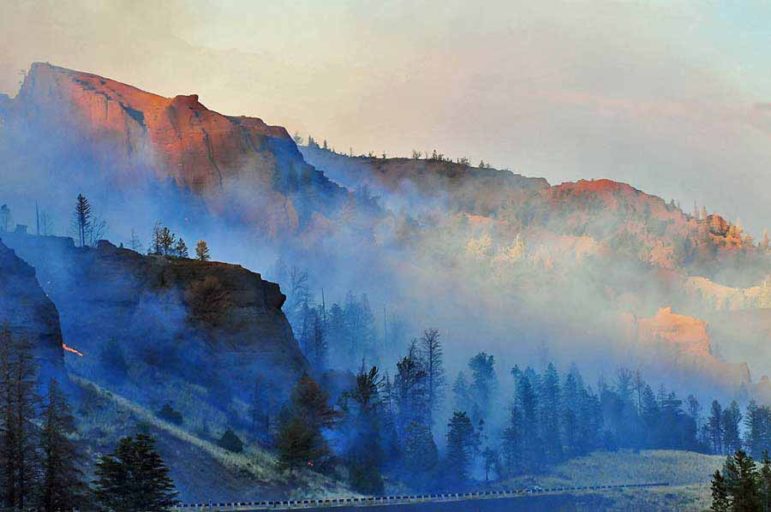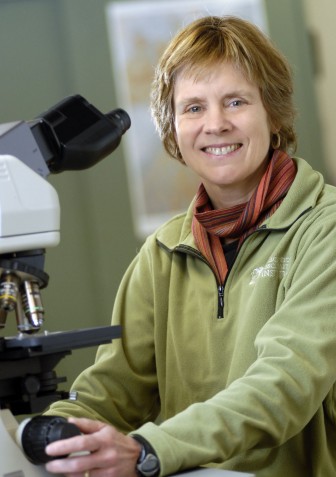
CODY, WYO. — Since 1872, Yellowstone National Park has been preserved and protected so that future generations will be able to enjoy the landscapes and wildlife much as they have existed for almost a century and a half.
But park managers have little or no control over many factors that influence the park, including one of the most important: changes in the climate. So learning more about how Yellowstone might change as the summers become warmer, longer and drier is a key concern for planners.
Cathy Whitlock, a professor of earth sciences at Montana State University-Bozeman, has a few ideas about what the future holds for Yellowstone’s climate. And that insight comes from some studious detective work done looking into the past.

Cathy Whitlock
“I’ve been studying Yellowstone’s ecological history since the mid-70s,” Whitlock said Thursday during a phone interview. “We’re trying to really understand how the ecosystem we see today has developed, and how much it’s been influenced by people, climate, fire and other factors.”
Whitlock will discuss her research Tuesday evening during a presentation at the Buffalo Bill Center of the West. The free lecture is the last in a series examining the ancient history of the greater Yellowstone region.
Whitlock believes that by looking at Yellowstone’s distant past, she can offer an educated guess at what the future may hold as the global climate (and the park’s) heats up.
But instead of a crystal ball or a time machine, her window on the past (and future) is mud. Or more accurately, sediment found at the bottom of lakes.
Written records offer Yellowstone weather and climate data dating back about a century, while examining tree rings can yield clues about factors like precipitation and fire in the park going as far back as a few hundred years. But because most of Yellowstone’s lakes were formed by glaciers 15,000 years ago, they hold a wealth of information stored in slowly accumulated layers of sediment.
Using a hand-operated drilling platform, Whitlock takes core samples of the underwater sediments, some of which are up to 30 feet from bottom to top—or past to present. She preserves the samples for analysis in the lab, including radiocarbon dating, and looks for key particles like charcoal, pollen and fossilized algae.
Those particles and their dates of stratification give an idea, for instance, of what kinds of trees were growing around a particular lake during a specific era, or the timing of major fires. Those and other clues can be pieced together to yield a picture of what the climate in Yellowstone was like going back thousands of years.
Anticipating how current and projected trends in Yellowstone are following a warmer, drier track, Whitlock is looking to a period between 5,000-9,000 years ago, when average summer temperatures were warmer by 3-5 degrees Fahrenheit.
Whitlock said that one of the main lessons drawn from her research “is that fires track climate, and as the climate becomes warmer, we see more fire.”
That means the future in Yellowstone is likely to bring more lodgepole pines, a species of tree that does well with fires, and fewer spruce and fir trees.
How Yellowstone’s ecosystem will respond to a warmer climate will vary depending on elevation and geology throughout the park, she said.
Whitlock said the sweeping fires of 1988 that burned across one third of Yellowstone changed how she approached her work.
“I was working on a vegetation history without fires. So being able to experience the ’88 fires completely changed my view of the importance of fire in the ecosystem,” she said.
The 1988 fires were driven more by climate issues than management policies, Whitlock said. And while a warmer climate will probably mean more fires, it’s unlikely to bring multiple fires on the same huge scale as those in 1988.
“You’ll start having more fires, but then you eventually burn up the fuels, so then the fires become smaller but more frequent,” she said.
Though park planners can’t control the climate, they can control how they manage Yellowstone’s resources in the face of warmer, drier, longer summers and more frequent fires. Whitlock said she hopes her research will offer some hard data to help drive those decisions.
“The past is really the key to the future,” she said. “Because we don’t have a guidebook to much of what’s going to happen, the more we learn about how the ecosystem used to be, the more strategic we can be in thinking about the future.”
If you go…
Cathy Whitlock will discuss “Yellowstone’s Past, Yellowstone’s Future” at 6:15 p.m. July 21 in the Buffalo Bill Center of the West’s Coe Auditorium, 720 Sheridan Ave., Cody, Wyo. The free program will be followed by a reception.
Contact Ruffin Prevost at 307-213-9818 or [email protected].

drier trend? It seems to me that 3 of the last 5 years have had moisture levels that would be towards the top of the last thirty years(snotel site graph only goes back that far)